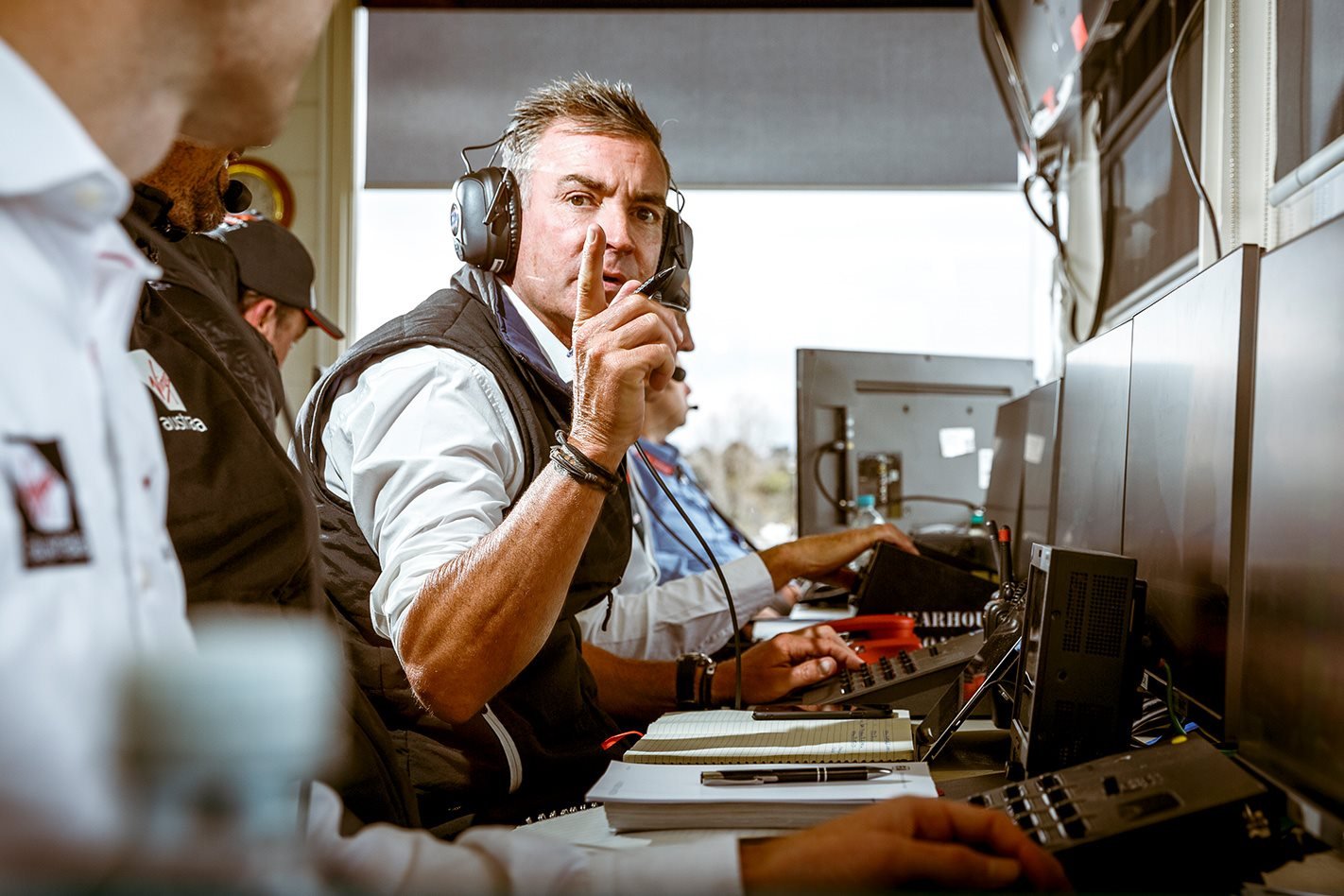“DON’T come in here bullshitting.”
It’s a warning shot from Craig Baird, a man who doesn’t suffer fools, and isn’t someone who can be easily deceived.
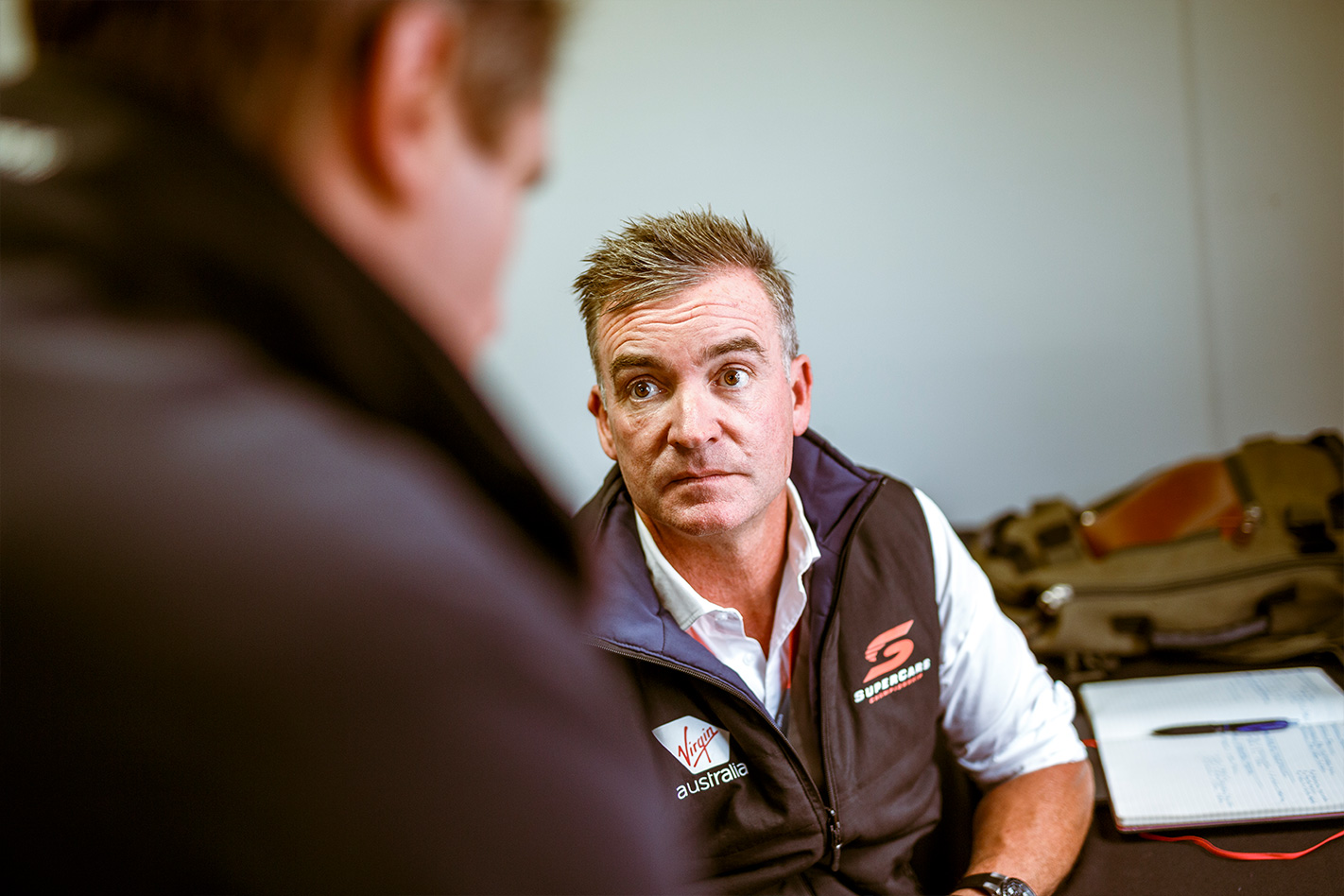
The 48-year-old New Zealander (and most successful one-make Porsche driver in the world) is the Driving Standards Observer (DSO) for the Supercars championship. His role is to ensure the most competitive touring car racers on the planet play fair.
By ‘here’ Baird is referring to the unremarkable demountable he and I are currently sitting in. Nestled between team trailers in the paddock of the Sandown 500, it acts as his office for the weekend. I’m here to watch Baird for the day, and have been given unprecedented access to both race control and his meetings with drivers to better understand how he upholds law and order.
Baird is in the middle of describing how he approaches his interactions with racers who have been summoned to the office. Drivers aren’t brought in for the small stuff, like pit-lane speeding; it’s for illegal or unsporting driving behaviour that ends almost invariably with fellow racers punted off the track.
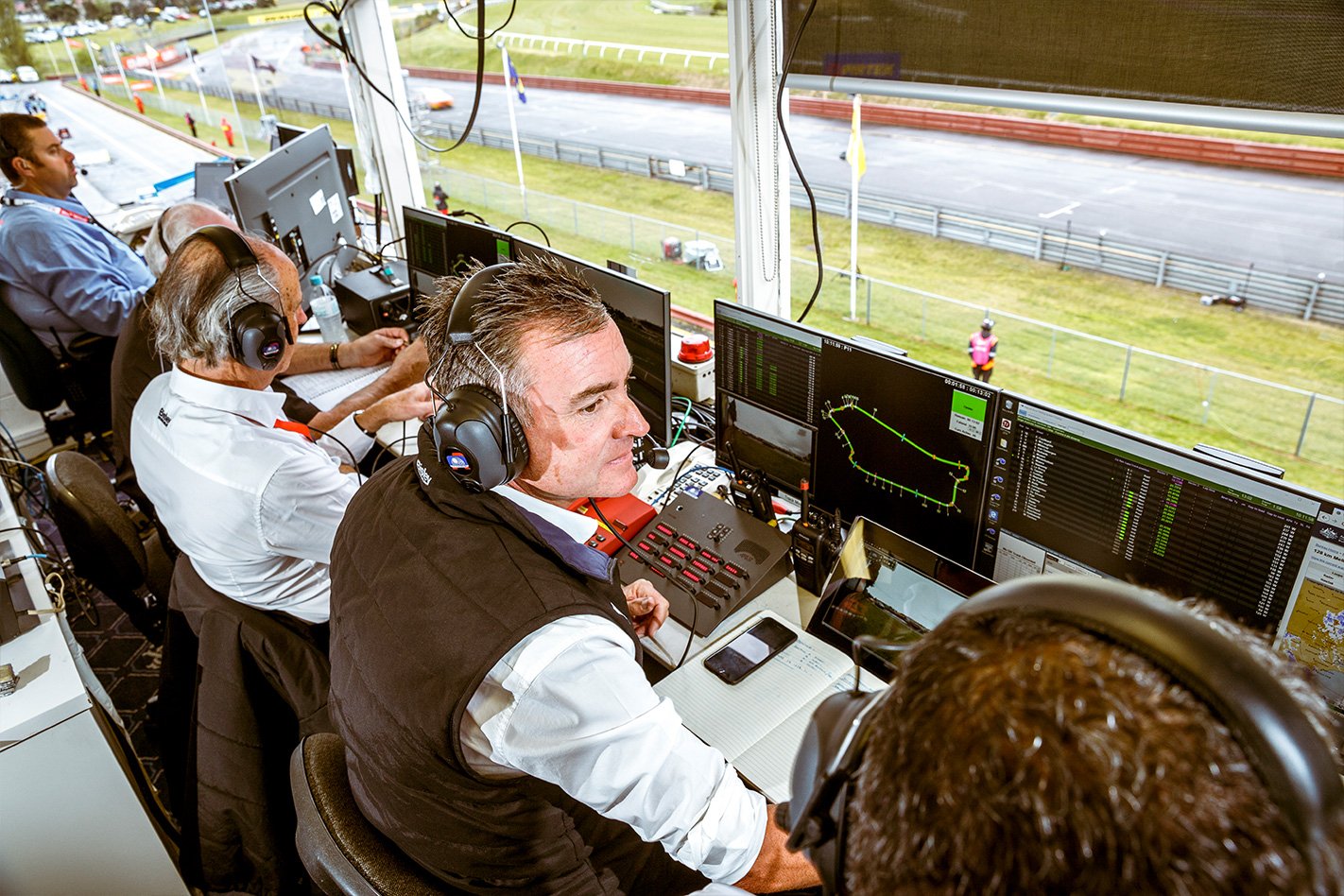
“They can come try and defend themselves to the best of their ability, but if they are going to sit there and absolutely bullshit, it’s not hard to pick it out, especially with the data and analysis we can do,” he adds.
Baird works alongside experienced race administrator and deputy race director Michael Masi, who leads investigations of potential rule breaches.
“How it works, essentially, is I’m the police prosecutor, and Craig is my expert witness,” Masi explains.
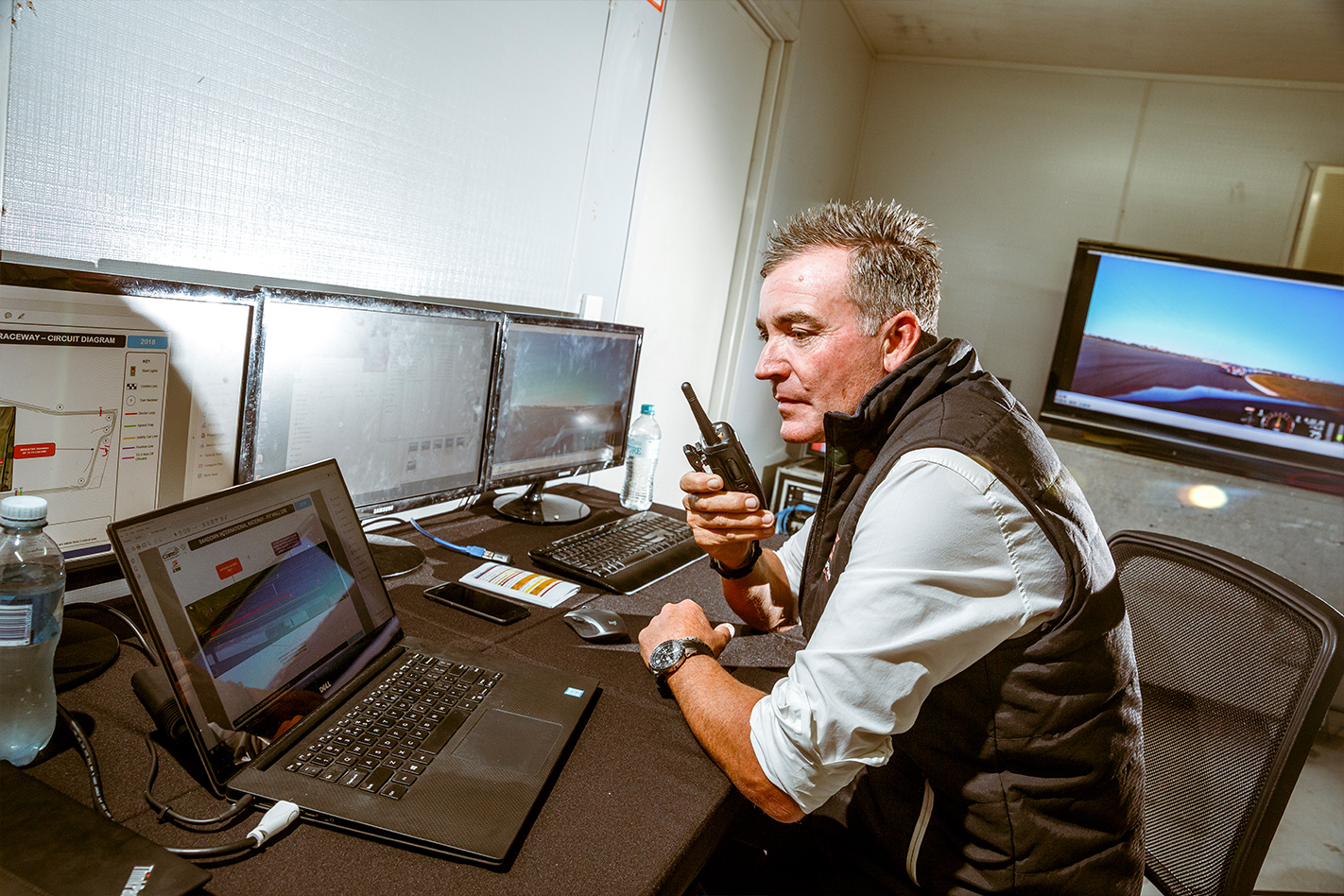
“I conduct and lead the investigation, and Craig is there to help inform my decision if a penalty should be applied.”
One of the first things that will be raised by fans or drivers who feel like Baird and Masi aren’t doing their job fairly is the issue of consistency.
It’s a topic which can prompt an impassioned response from Baird, who says perceptions are not always reality.
“We have the same set of rules and recommended penalties for everyone,” he states. “The only difference is that as we move deeper into the season, the penalty needs to have an effect. So, our recommended penalties; everyone starts with that, but someone who is 24th in the championship no longer cares to lose championship points, so then we move things around a little bit.
“People say we need to be consistent. Bollocks! You have to be inconsistent to be consistent. Because every corner is different, every incident is different.
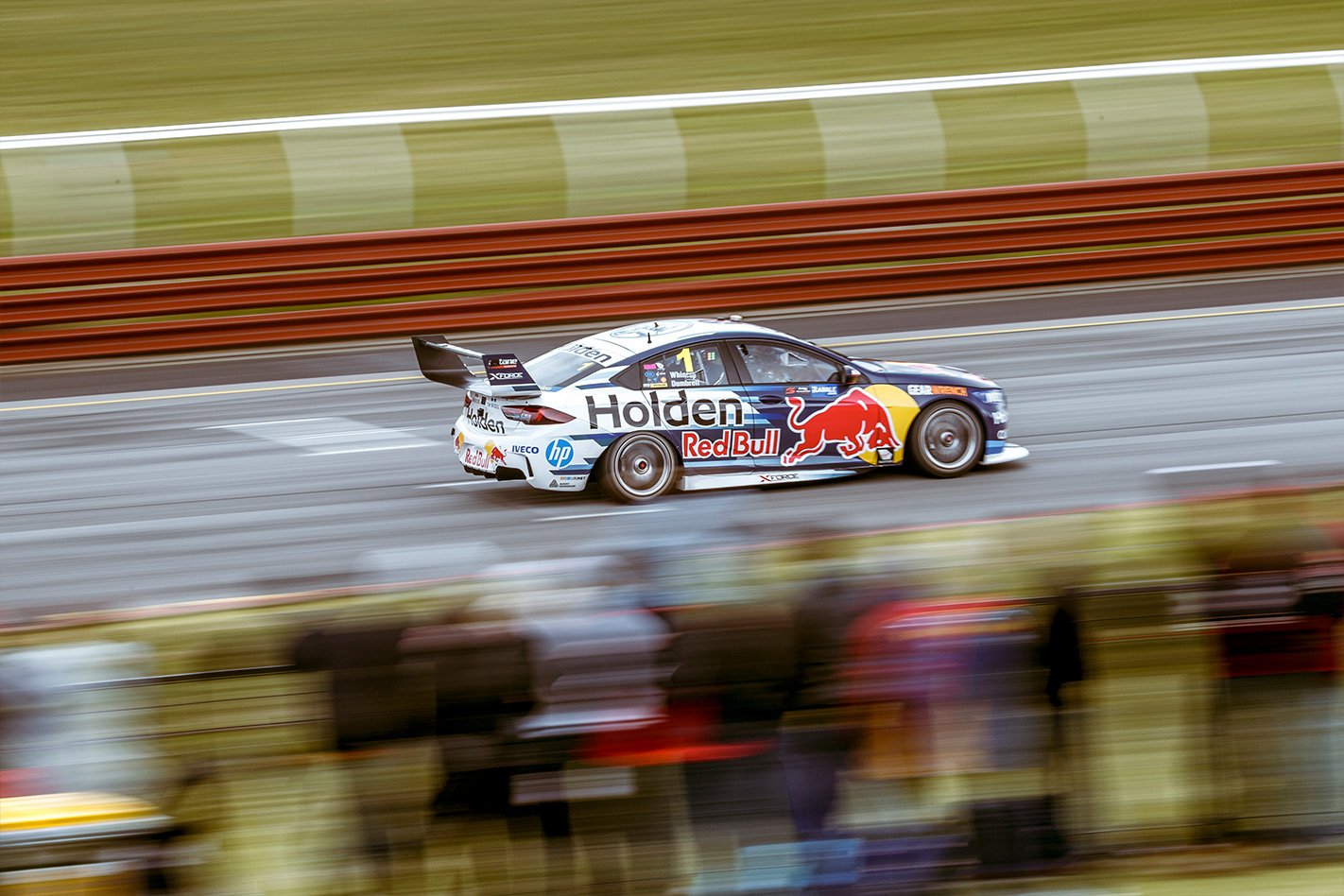
“You can’t just sit there and say every time one driver hits another. it’s the same, and dish out a one- size-fits-all penalty.”
In race control Baird sits perched on a stool, able to look down on pitlane and the race track, and has a total of three screens placed directly in front of him. To his left is race director Tim Schenken, while Masi sits to his right. The trio communicate via headsets, which also allow them to listen in on team radios.
Race starts are a flurry of commands from Schenken and Masi as they co-ordinate with marshals, but Baird simply sits in waiting, like a sentry calmly readying for action. When the calamity does arrive, and it always arrives, Baird swiftly starts collating the evidence he will need to make a judgment.
Only the clearest-cut cases are dealt with during a race, with Baird hesitant not to pull the trigger on a penalty without 100 percent surety.
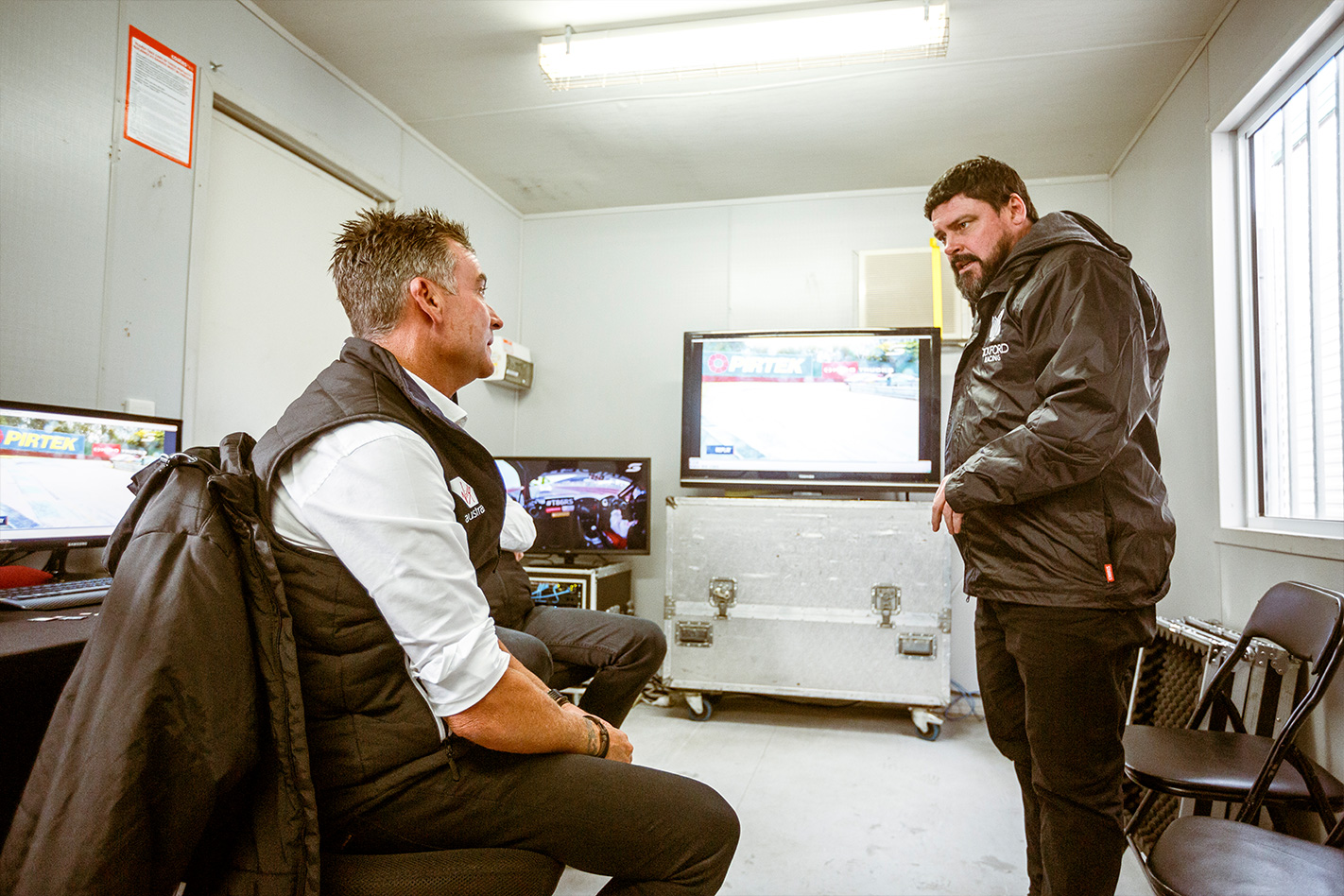
“If I make a decision in a race, I’m very confident that I’ve got the tools or vision in front of me that I needed to make the right decision,” Baird says. “And it might not be vision that went to TV. It’s not until you get all the angles that the full picture appears.”
“Make no bones about it, if I’m in any doubt [during a race], or I am wavering, then I will always make it a post-race investigation.”
Each car in the field is fitted with a judicial camera, and at the end of the session Baird sends an official to pull the memory cards from the cars he wants to investigate. There are heavy penalties for teams who supply corrupted footage, or can’t produce a memory card.
The onboard footage, along with multiple un-aired angles from the TV feed, is then pored over meticulously. Frame by frame, Baird dissects the incident. What he often finds is a hidden nugget of evidence – a locked wheel or extra few degrees of steering angle that wasn’t visible to the audience at home.
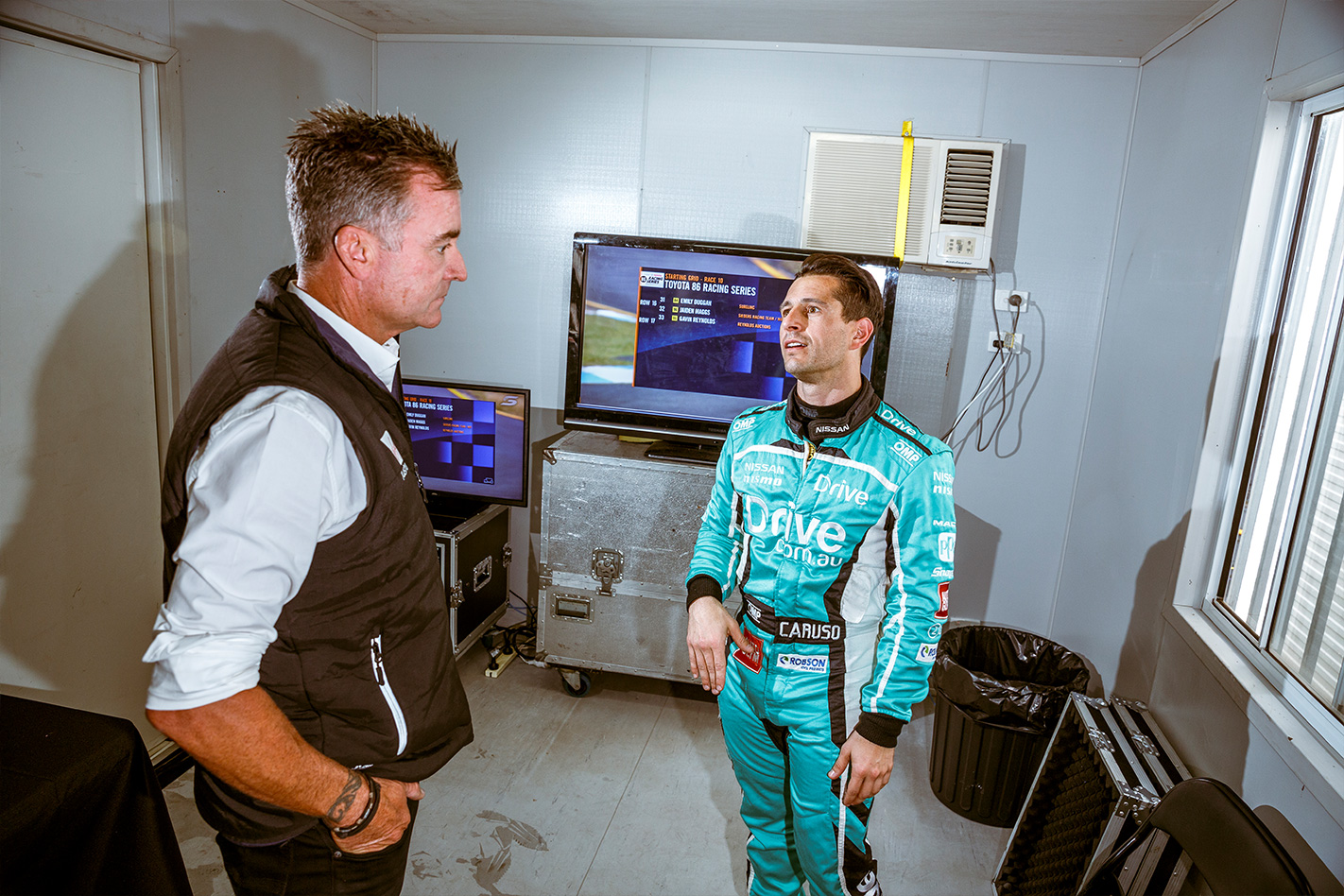
During an investigation involving Jason Bright and Warren Luff from Saturday’s qualifying race, Baird replayed a TV camera feed frame by frame, noticing one of the tyres on a car appeared flat. No sooner had he identified the issue, he was on the phone, requesting tyre pressures from before and after the crash from Supercars’ technical department. A few minutes later the data is being pulled up on screen. Not even the teams have access to this information. What appeared like a piece of foul driving on television, quickly revealed itself to be a complex racing incident.
And it’s not just the initial clashes themselves that come under the Baird and Masi microscope. When teams request an investigation, they are opening a Pandora’s box. On more than one occasion during our observations, a team made a request for an investigation into another driver’s conduct, only for the tables to be turned, and find themselves hauled in front of the pair to explain bad behaviour.
Sitting in front of Baird and Masi can be humbling for drivers, with the sheer quantity of information and knowledge giving them nowhere to hide. Baird says those “from the big end of town” won’t often give him trouble, and cop to their mistakes easily. It’s the younger, more hot-headed drivers who can prove argumentative. But Baird isn’t easily railroaded, and has no time for coddling a driver.
During our observations there was only a single exchange that became heated, with a team owner feeling his driver was unfairly punished. Baird and Masi didn’t back down, and methodically laid out the reasoning behind their judgment, while showing that if anything, the driver in question was let off lightly.
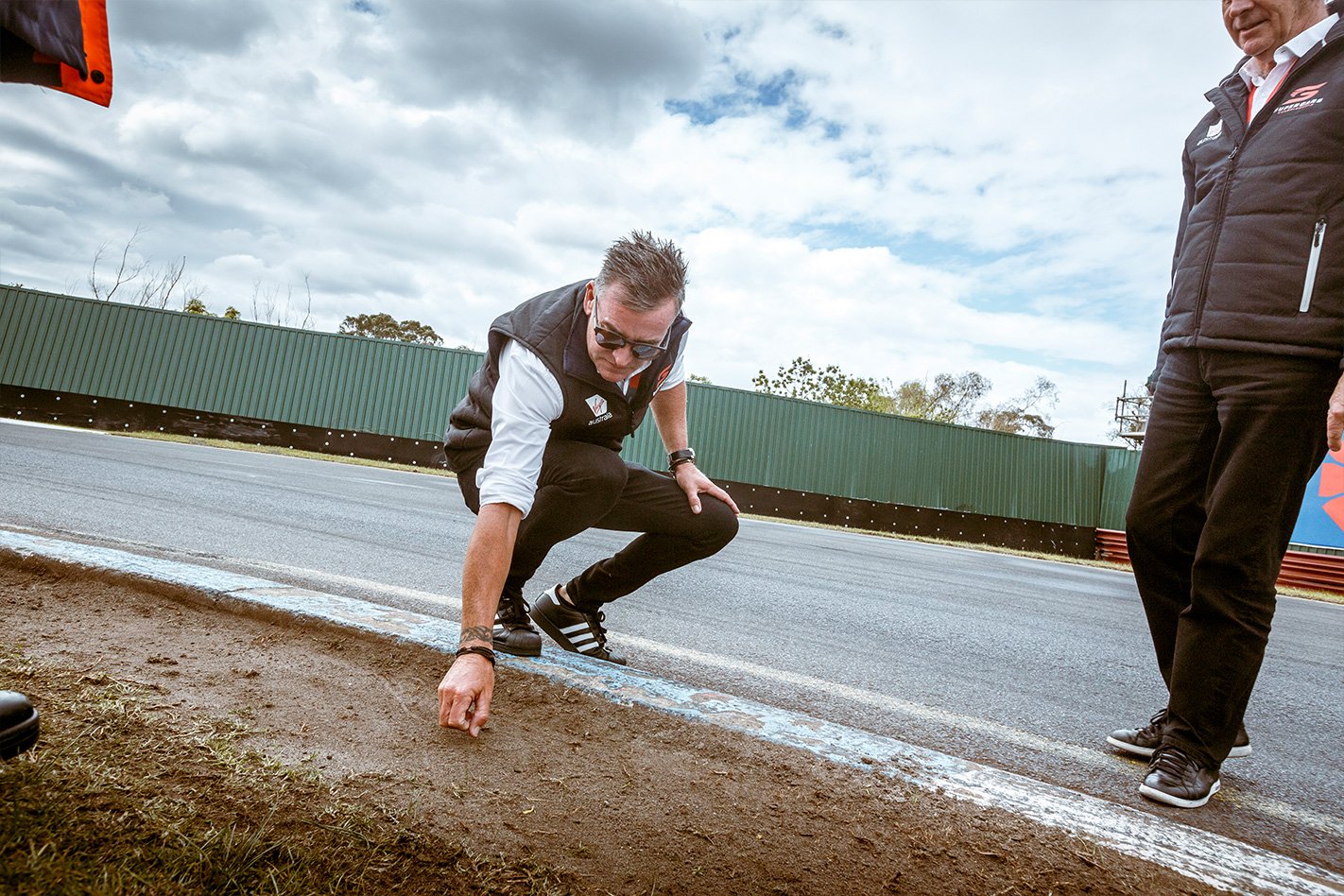
Baird’s job is a difficult one, but he approaches it methodically, always aware of the bigger picture. A literal interpretation and enforcement of the rulebook leaves no scope for context, and in his nearly two years as the DSO, Baird has earned the trust and respect of teams and drivers.
So next time you see him pass down a judgment while you’re watching a race, just know that it’s likely the right one.
Redressing the issue
When Jason Bargwanna stepped down from the DSO role at the end of 2016, a controversial rule went with him – the redress. However, despite its removal from the rulebook, Baird says that redress is still a concept that can have a place in the sport: “It’s not a rule, but we have an agreement that drivers can address something themselves, but only if it’s a one-on-one situation.” By limiting the scope of when a redress is implemented, Baird hopes it prevents repeats of incidents like the controversial end to the 2016 Bathurst 1000.
Problem children
As for repeat offenders, Baird says tensions are heightened in the lower-half of the field, where ultra-competitive drivers try every trick in the book not to be last. “My problem in this office, is from 20th position to the back – no one wants to be there,” he says. Adding to that is Simona DeSilvestro’s presence, who, as the only female on the grid, has suffered a trial by fire, flamed by fragile male egos. “No one wants to come back and say they got beaten by a girl. But I’m telling them, they’d better get used to it, because she can drive,” says Baird.
The all-seeing eye
When the 2019 Supercars championship starts in the searing heat of Adelaide in late February next year, Craig Baird will have a new tool at his disposal that makes his current information-gathering systems seem outdated. It’s called Hawkeye, and at the time of print it will have just undergone its second trial run at an event. The system will allow Baird to access every single camera at the track, including those onboard each car, and trackside for the broadcast, at any time, even if they aren’t recording. Hawkeye allows Baird to timestamp incidents during a race, and watch them back from multiple angles at the same time, frame-by-frame. Fibbing drivers beware.


